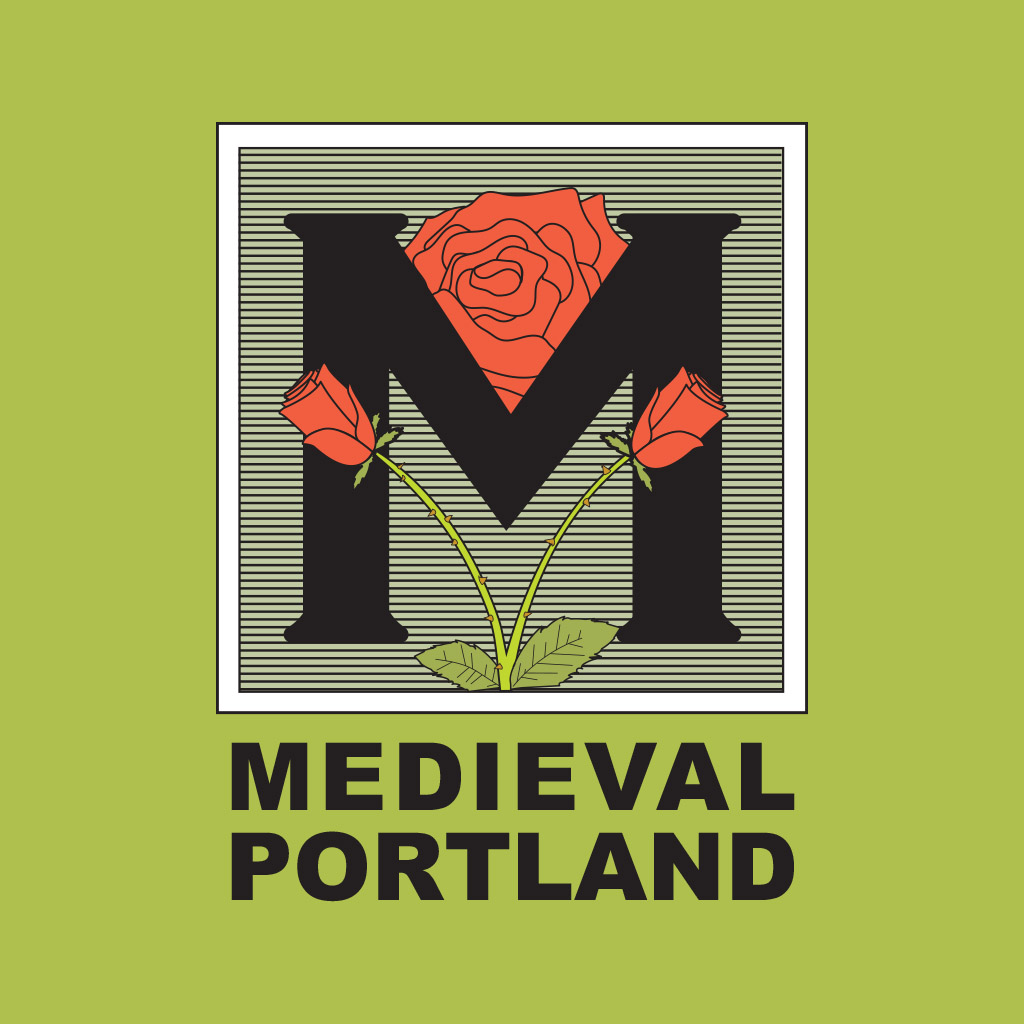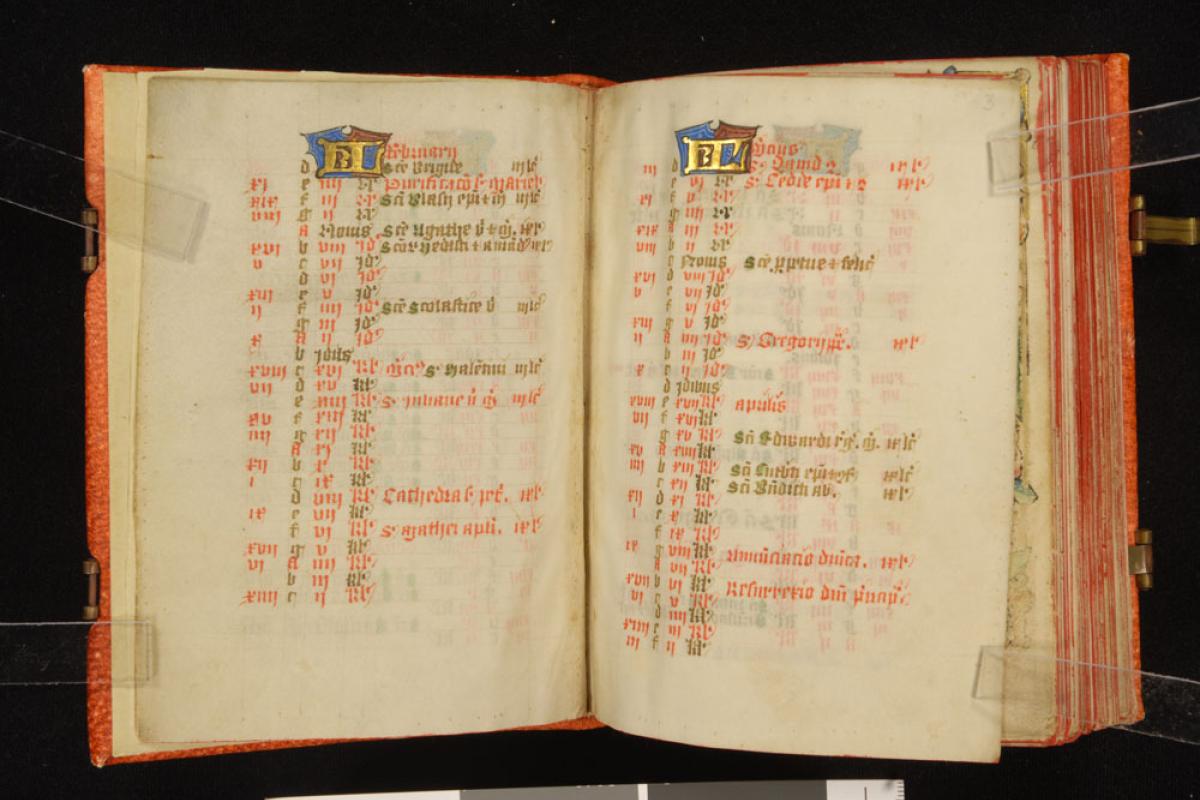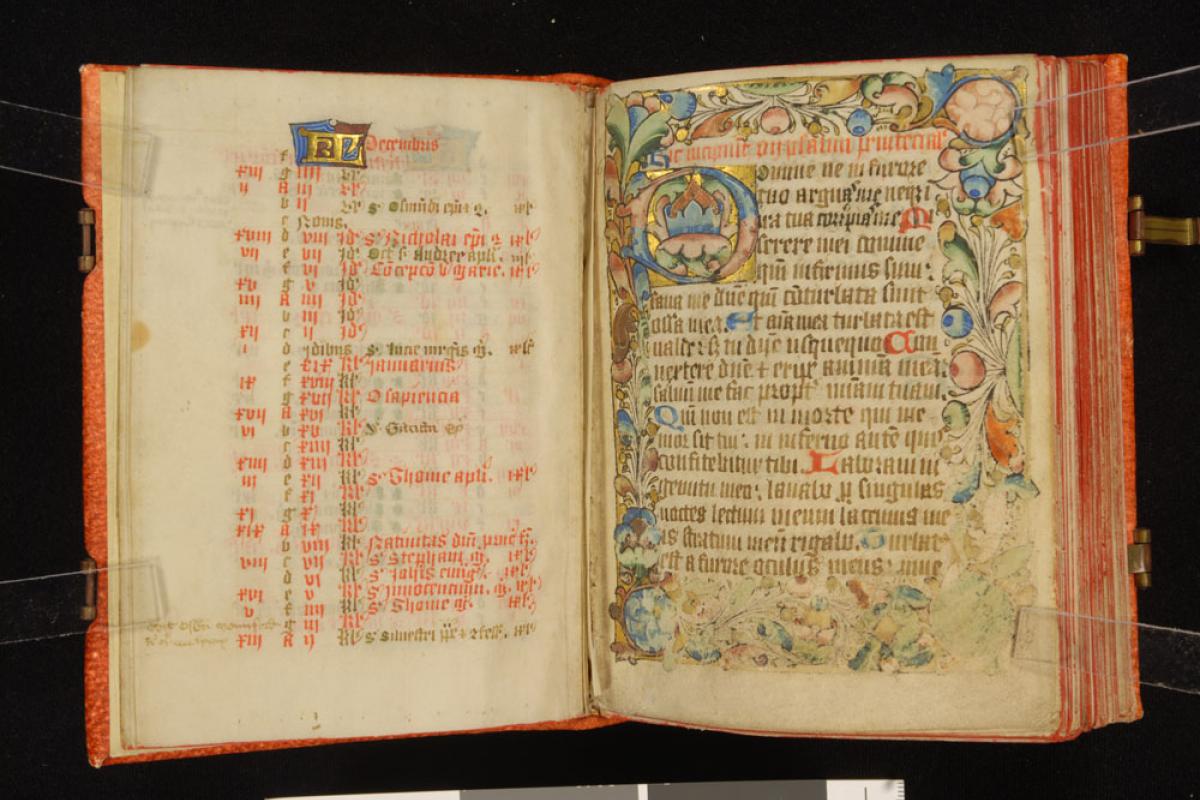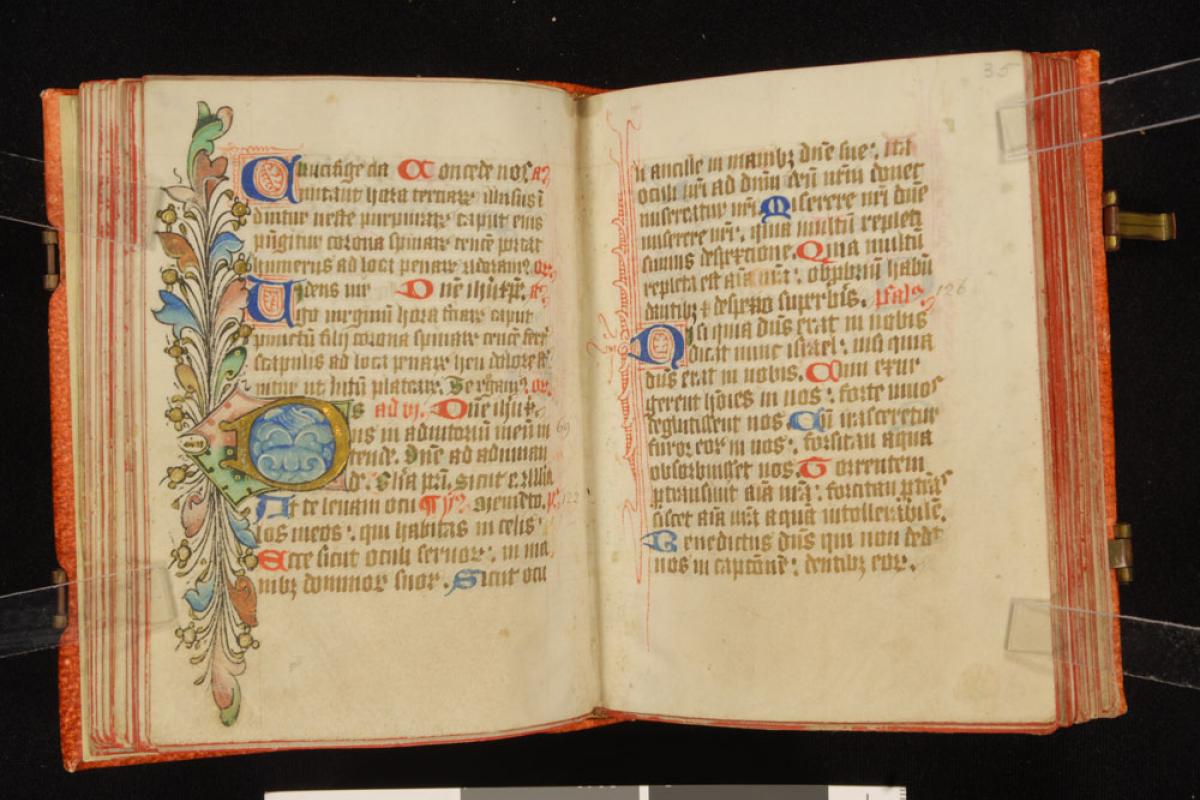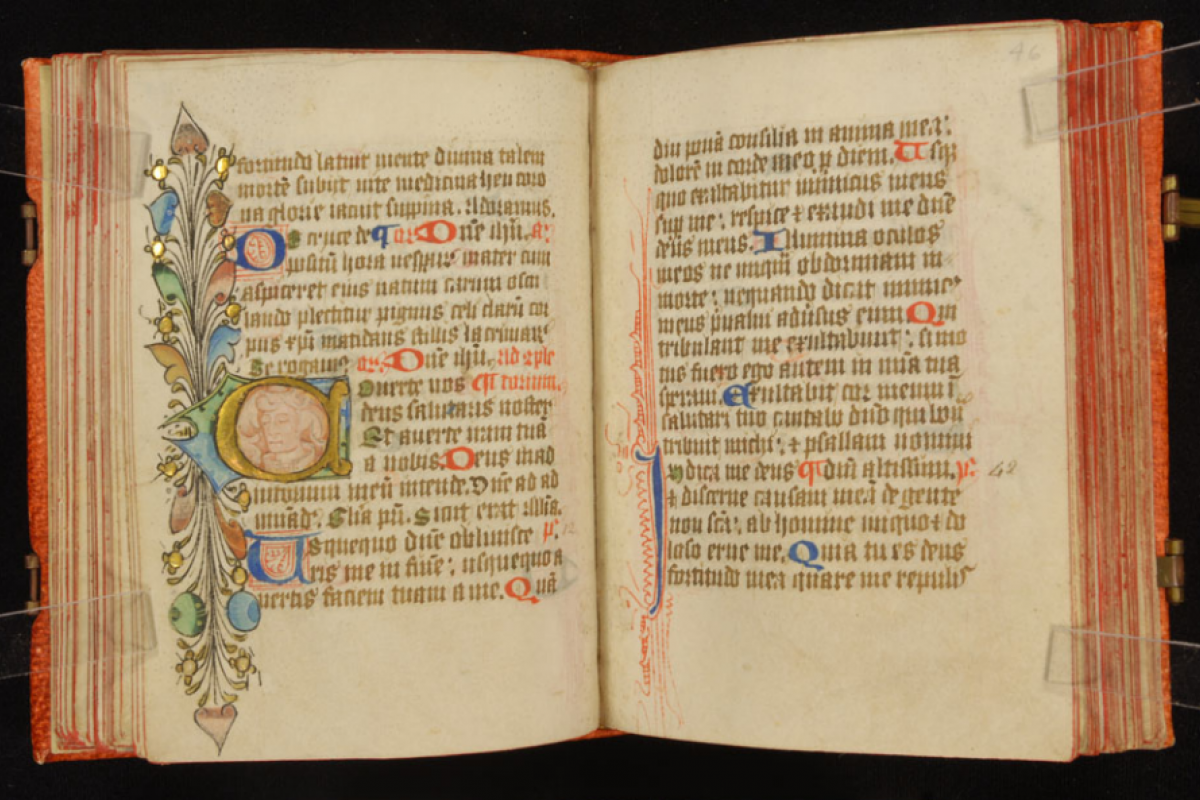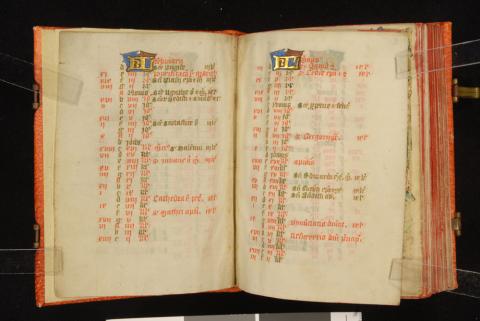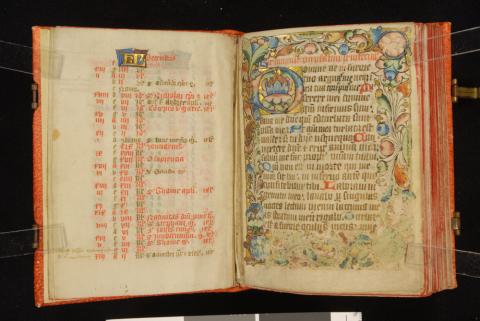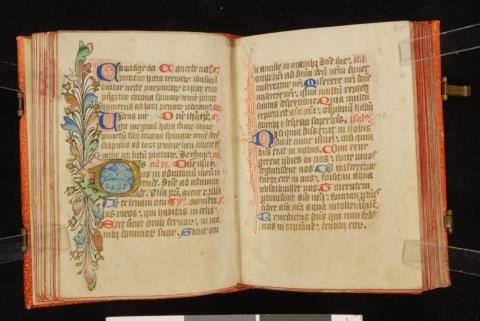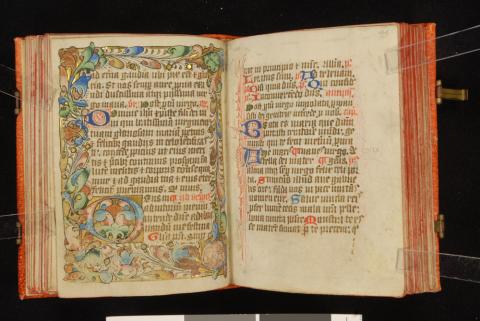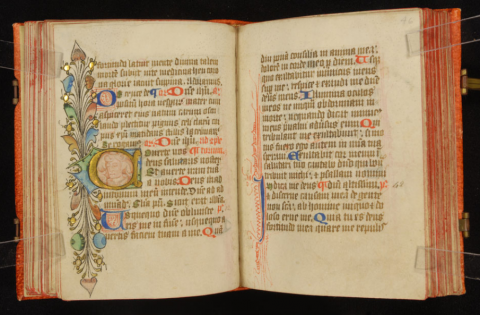Book of Hours | Paston Hours
Book of Hours | Paston Hours
English, ca. 1450
Images:
fols. 2v-3r
fols.7v-8r
fols. 14v-15r
fols. 34v-35r
fols. 43v-44r
fols. 45v-46r
fols. 48v-49r
fols. 88v-89r
parchment
height 14.7 cm
width 10.5 cm
119 leaves. Very pointed Gothic script. 18 lines. Gatherings mostly of 8. Text in Latin: Prayer to Henry IV, Calendar, Psalms, Litany, Hours of the Virgin, Office of the Dead, hours of the Cross, Prayers. Several decorated borders and initials, one historiated. Binding: brown pigskin, 19th c.
Prior Publication: Lackaff, Dalene G., A descriptive catalogue of the manuscript books of hours in the collection of the Mount Angel Abbey Library, M.A. Thesis, University of Oregon, 1999, pp. 11-25
Mount Angel Abbey Library, Ms 27
Jeff Brown, Medieval Portland Research Assistant
This prayerbook is named after its earliest known (perhaps original) owners, a family from fifteenth-century East Anglia who owned land in Norfolk; John Paston (d. 1466) practiced law in London, his wife Margaret (d. 1484) managed the Paston estates in his absence.
The book exhibits the handiwork of two artists; the fact that the quires have been ruled and decorated differently suggests the book may have been two separate manuscripts bound together. Needle holes at the top and bottom of the first quire are of interest, perhaps denoting the stitching of flaps of silk or other fabric to protect illuminations. Likewise, folios 38 and 39 exhibit evidence indicating a pilgrimage badge had been sewn into the manuscript.
English saints, many specific to East Anglia, are celebrated in the prayerbook’s calendar. The decorative style also reveals handiwork of artists typical of fifteenth-century London workshops, such as those of Paternoster Row. The prayerbook is otherwise relatively plain, lacking in miniatures and coats of arms, giving the work a rather utilitarian feel.
Parshall, Peter. Illuminated Manuscripts from Portland Area Collections. Portland, OR: Portland Art Museum, 1978, p. 23 - Quoted with permission
The standard English style of illumination practiced during the fifteenth century is readily distinguishable from its counterparts on the continent. The surging, rhythmic leaf patterns, sharply pointed initials, and explosive vine ornament are as aggressive as the Gothic book hand of the text. The broad tones of pastel, the softly modeled voluminous foliage, the spherical, lobed forms and golden discs are typical of English work from the 1440s onward. The potential subtlety of this otherwise forceful style is apparent in the delicate rendering of a cleric's head emerging from the soft leaf patterns of an initial painted in monochromatic tones of rose (45v). The first leaf done in a contemporary, though different, hand refers to King Henry IV (†1463), Henry VII (reigned 1485-1509), and the English "sweating sickness" that struck in the 1480s. Furthermore, the calendar includes notations of deaths in the Paston, Berney, and Mumford families--one referring to the death of Margaret Paston whose will, according to an enclosed letter from the British Records Office, was written in 1482. Margaret's husband John Paston was legal counsel to Henry VII. Hence the manuscript was likely in use by the last two decades of the century. A close association between the Pastons and the Bromholm priory, Norfolk, suggests this is an early and possible original provenance for the manuscript.
Wilma Fitzgerald, PhD, SP - Quoted with permission from an unpublished study
Liber horarum (cum kalendario). Saec. XV. England. FF i (paper) + 119 +i (paper). 144 x 108 (95 x 63) mm., one column 16 lines written in Gothic script. Two 5-line initials with leaf ornament (fols. 8, 43v). Three 4-line initials. one historiated (fols. 34v, 36v, 45). A few 3-line painted initials and many 1- and 2-line initials in blue and red paint with pen scrolls in margin. Full borders on leaves with 4-line initials. Simpler borders on fols. 34v, 45v, and 69. Modern binding (1980) of reddish-brown pigskin with metal clasps. Provenance: Paston, Berney, or Mumford family; James Florence. Chichester (note on flyleaf of former binding in Charles Reynell's hand) to his daughter (note on flyleaf of former binding in Charles Reynell's hand); to Charles W. Reynell (addresses of 1874 letter from Public Record Office: not in his hand); English book seller cutting from catalogue pasted on original flyleaf)
Prayer to Henry VI (Rex Henricus sit amicus, fol.1, Chevalier 32931); Calendar in Latin, feasts in red include David (3/1), Chad (3/2), John of Beverly (5/7), Augustine (5/26), Medard and Gildard (6/8), Translation of Edmund (10/17), Frideswide (10/19), Edmund (11/20), and Thomas Becket (12/29). Seven Penitential Psalms; Gradual Psalms; Litany and Prayers; Hours of the Virgin, Use of Sarum; Short Hours of the Cross The Canticle of the Three Children; Office of the Dead; Commendation of Souls; Psalms of the Passion (Pss. 21-30.9); Prayer to Christ, O Bone Ihesu, (Leroquais ll. 345, 118-119).
